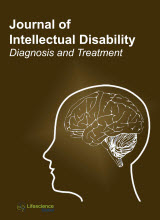jiddt
|
|
Abstract: Objective: To identify evidence-based behavioural interventions used to decrease restricted and repetitive behaviour (RRB) in children with autism (ages 0-18); to understand the application of these strategies within the PEO (Person, Environment, Occupation) Model of Occupational Performance and the role of the occupational therapist in addressing this limitation. Background: RRB is a core feature of autism that often impedes functional behaviour. Decreasing RRB to enable functional behaviours is central to the occupational therapist’s role with this population. Many interventions identified as effective for this impairment are based on the principles of applied behaviour analysis (ABA). Method: An integrative review of the literature was completed to identify interventions targeting RRBs. Those found to be effective are described within an ABA framework and within the PEO Model of Occupational Performance. Results: This review identified twenty-eight effective interventions used to treat RRBs in autism relevant to the field of occupational therapy. Categorization of interventions using an ABA framework and the PEO Model allowed comparison between approaches and application to occupational therapy practice. Conclusion:A functional behaviour approach (FBA) used in combination with the PEO model will enable greater understanding of RRBs and provide a more comprehensive approach to the treatment of RRBs in children with autism. Keywords: Autism, repetitive behaviour, occupational therapy, PEO model, behavioural intervention. |
|
|
Abstract: Objective: To identify evidence-based behavioural interventions used to decrease restricted and repetitive behaviour (RRB) in children with autism (ages 0-18); to understand the application of these strategies within the PEO (Person, Environment, Occupation) Model of Occupational Performance and the role of the occupational therapist in addressing this limitation. Background: RRB is a core feature of autism that often impedes functional behaviour. Decreasing RRB to enable functional behaviours is central to the occupational therapist’s role with this population. Many interventions identified as effective for this impairment are based on the principles of applied behaviour analysis (ABA). Method: An integrative review of the literature was completed to identify interventions targeting RRBs. Those found to be effective are described within an ABA framework and within the PEO Model of Occupational Performance. Results: This review identified twenty-eight effective interventions used to treat RRBs in autism relevant to the field of occupational therapy. Categorization of interventions using an ABA framework and the PEO Model allowed comparison between approaches and application to occupational therapy practice. Conclusion:A functional behaviour approach (FBA) used in combination with the PEO model will enable greater understanding of RRBs and provide a more comprehensive approach to the treatment of RRBs in children with autism. Keywords: Autism Spectrum Disorders, Educational Counselling, Social Mediation, Psychoeducational Intervention. |
|
|
Abstract: Being female and autistic is poorly understood, but is autism really ‘rare’ in females? Historically, autism has been associated with traditionally masculine features and stereotypes of behaviour, with some believing autism only occurred in males [1]. This leads scientific enquiry to the critical question of whether there are more males living with autism or, conversely, do females on the autistic spectrum present differently to males and, therefore, are at risk of remaining undiagnosed?. Keywords: Autism, Females, Presentation, Diagnosis, Gender.quicksell file="/JIDDT/JIDDTV5N3A4-Wenn-OA.pdf" price="" title="" currency="" customPayPal="" emailDelivery="" requireRegistration="" discount_rate="" return_url="" notification_email="" rm="" cbt="" sub="" addToCart="" partner_id="" license_id="" freeForGroup="" assignUserToGroup="" subscriptionEnable="" subscriptionRate="" subscriptionBillingCycle="1" subscriptionBillingCycleUnit="M" subscriptionRecurringPayments="" subscriptionRecurringTimes="" cbpl="" bundleSelect=""}css_buttons/0001{/quicksell} |
|
|
Abstract: The following paper addresses some of the issues presented by students with Special Needs, (especially autism) at school. It particularly focusses upon sexuality and gender. For example, autism and gender dysphoria appear to co-occur more often than in typically developing students. However, these young people may not understand how their reality translates to living within the public arena. This is also true of sexuality. Acceptance, understanding and accommodation of these students needs to inform our measures for keeping safe at school; this is of utmost priority. Keywords: Special needs, Autism, Sexuality, Gender, Gender Dysphoria, Gender Variance, School, Safety, Suicide, Learning disability |
|
|
Abstract: People with intellectual disabilities today have an high life expectancy, routine screening and preventive services are essential to their overall quality of care. We used the 2012-2013 Italian National Health Interview Survey (NHIS) to examine screening and preventive service use for persons with intellectual disability. We estimated about 953 thousand people with intellectual disability, 58% of which are female and the 59% are over 65 years. Their quality of life, in terms of physical and mental status, was significant lower than general population. Intellectually disabled women generally reported screening and preventive services at lower as compared to women without intellectual disability: the risk of not attending a Pap smear test in a due time, in terms of odds ratio, was 4.5 (95% confidence interval, 3.6-5.7), as for mammography was 2.4 (95% confidence interval, 1.8-3.2). The risk of not attending colorectal screening was also significant, even if lower than female screening, (OR: 1.5; 95% confidence interval, 1.2-2.0). Various approaches can be adopted to improve access for intellectually disabled persons to preventive health care services. Keywords: Intellectual disability, preventive health services, screening, mental health, access. |


